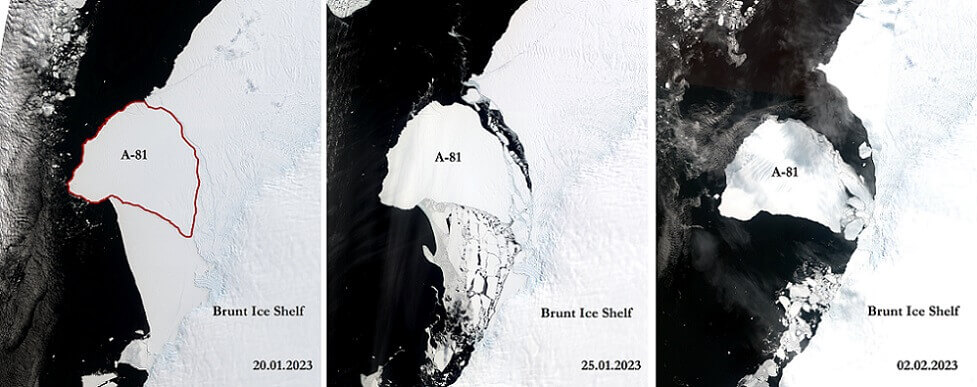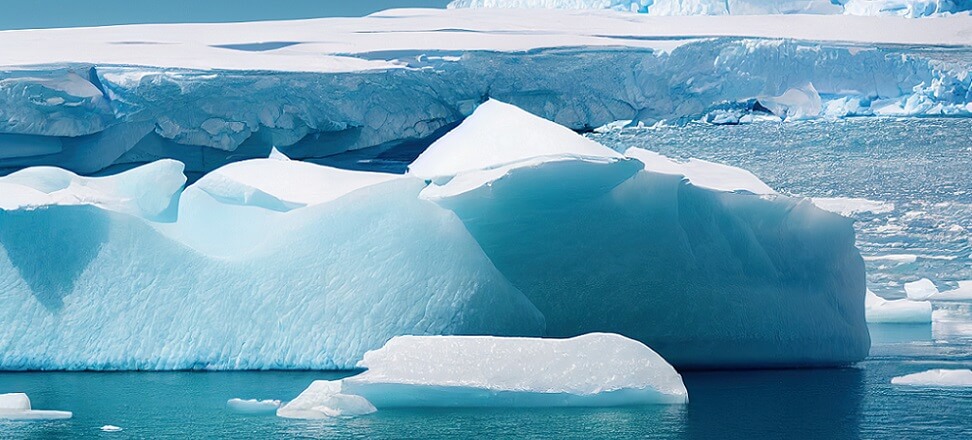An iceberg the size of London, and more than three times the size of Warsaw, has broken away from an Antarctic shelf glacier. This occurred on Sunday, January 22, between 19:00 and 20:00 UTC, during the spring tide.
Detached iceberg – the process of “calving”
A huge iceberg that is more than 1550 square kilometers in area and 150 meters thick has separated from the Brunt ice shelf. This glacier is probably the most accurately observed of its kind on Earth, and it is also the location of the BAS Halley research station.
Unlike the recent changes taking place in Antarctica, the iceberg retreat is not related to a warming climate, but is a natural and even expected phenomenon. Researchers who have been monitoring Brunt have been expecting for years that this could happen.
“This calving event was expected and is part of the natural behavior of the Brunt Ice Shelf ,” said BAS glaciologist Dominic Hodgson. “It is not related to climate change.” Scientists say calving occurs when chunks of ice break away from the edges of a glacier.
Researchers noticed the first signs of this process more than 10 years ago. In 2012, satellite monitoring of the Brunt Ice Shelf revealed the first signs of movement in a chasm that had lain dormant for at least 35 years. The crack in the ice cap, named Chasm-1, grew over time until the lump broke off.

Excerpted by Monika Mazur, Pectore-Eco, from: Landsat 8 satellite imagery(https://earthexplorer.usgs.gov/)
This is the second iceberg to break off in the region. Is Antarctica disappearing?
The recent calving of the iceberg is the second such phenomenon in the area in the past two years. A similar, equally spectacular event involving a slightly smaller iceberg, designated A-74 (1270 km2), took place in February 2021. The smaller object drifted away from the Brunt Ice Shelf into the Weddell Sea.
BAS researchers expect the Antarctic Coastal Current to move the new iceberg westward. It will likely follow a similar path as A-74, that is, along the Antarctic Circumpolar Current toward the Weddell Sea. Floating icebergs move at different speeds. Their movement depends on the direction and speed of the wind and sea current, as well as the depth of the water bodies and the ratio of the size of the submerged and emerged parts of the iceberg.
The new iceberg was officially named A-81. It was granted by the US National Ice Center (NIC). Antarctic scientists will monitor it for further activity.

 Polski
Polski






